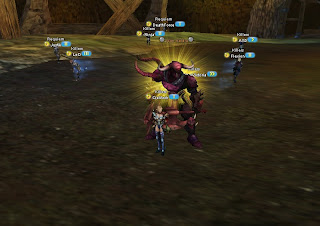Journalist objective is to be the trustees of the public. Their role is to record or capture events that happening all around the world by their camera eyes (NPPA, 2011). Journalist keep records of events like war, deaths, disasters, riots, accidents and deliver them to the public through media as in newspapers. Journalist needs to deliver the truth to public as it is one of their objectives as a journalist where is uncover the truth to the public eyes. As according to National Press Photographers Association, NPPA (2011), “Our primary role is to report visually on the significant events and varied viewpoints in our common world – the faithful and comprehensive depiction of the subject at hand – we have the responsibility to document society and to preserve its history through image”.
Through the images taken by the journalist, we actually know that the event is actually happening somewhere somehow in other side of the world which will create an emotional point of views to the public or at least getting some attention to certain events or disaster as according to Zelizer (2005), “They rely on an unspoken ocularcentric bias of western civilization to be understood sufficiently, a bias that holds them to be largely affective, emotion driven and generating gestalt-like experience in their viewers”.
Photographs can reveal truth to the public but can public trust the photograph, as since the camera were invented there was manipulation that happened where the photographer manipulate the situation and sending false news as according to NPPA (2011), “Photographic and video images can reveal great truths, expose wrong doing and neglect, inspire hope… - photographs also cause great harm if they are callously intrusive or are manipulated”.
The manipulation of images and lies that deliver by the journalist has created huge responds from the public where this image has successfully persuade their viewers as according to Lester (1995), “Images evoke almost immediate emotional responses among viewers, pictures have tremendous impact – but the flip side to such visual power is that images can also offend, shock, mislead, stereotype and confuse”.
Toward this problem, journalists need to follow the steps or rules and regulations before publishing images to avoid of mislead, stereotype, shock to the public or viewers. Below are the rules of ethics that are needed as journalists:-
1. 1. Capturing image of events.
As a journalist they need to capture events that were in front of them and deliver the image to the public as what they have seen because the public needs to know the truth that happening all around the world, As according to Warburton (1998), “Images are valued by journalists, who appreciate the message of ‘eyewitness’ authority, the notion of ‘having been there’ and the idea that ‘we were there and you were not’ – aims of accounting for the events of the world as they happen”.
2. 2. Discover the truth.
Journalist needs to uncover the truth through the image they had capture, they need to be honest on what they want to deliver, the viewers trust the photojournalist to give them the truth about what really happened, where according to Warburton (1998), “Readers of the magazines and newspapers – appeared reasonably took these to be photographs of real event ..- News photographs was based on trust: trust that the photographer wasn’t duping picture editor about what his or her photograph really showed”. Also according to Lester (1999), “Every photojournalist at all times to strive for pictures that report truthfully, honestly and objectively.”
3. 3. Avoid manipulation.
As for today, we are at the era of computer technology, thus because of this lots of photographers can manipulates images and sometimes it’s hard to tell either the image is true or false, as according to Lester (1995), “The spread if computer technology that allows practically anyone to produce and disseminate visual messages in massive number for a world-wide audience”. Due to this manipulation will create different interpretation of the event that will lead to shock, confuse as according to NPPA (2011), “Do not manipulate images or add or alter sound in any way that can mislead viewers or misrepresent subjects”.
4. 4, Do not show victims of violence images.
This will make the family of the dead will become offended because of the publish one of their family member which tragically killed or accidents, journalist need to treat the deceased with a respect only use the image if necessary, as according to NPPA (2011), “Treat all subjects with respect and dignity – give special consideration to vulnerable subjects and compassion to victims of crime or tragedy”.
5. 5. Avoid stereotyping.
According to Lester (1995), “Stereotyping portrayals of ethnic, gender, physical characteristic, sexual preference and job-related cultural groups are a result of journalism professionals being lazy, ignorant or racist”. Journalist that uses African American to capture create attention to the public as this has shown the act of racism, portraying the African American as a criminal.
References:
- Lester, P. M. (1995). Photojournalism Ethics Timeless Issues. Retrieved on November 4th, 2011 from http://commfaculty.fullerton.edu/lester/writings/photoethics.html.
- NPPA code of Ethics. (2011). Retrieved on November 4th, 2011 from http://www.nppa.org/professional_development/business_practise/ethics.html
- Lester, P.M. (1999). Photojournalism an Ethical Approach. Retrieved on November 4th, 2011 from http://commfaculty.fullerton.edu/lester/writings/pjethics.html
- Zelizer. B. (2005). Journalism through the camera’s eye. In Stuart. A. (ed.), Journalism: Critical Issues (pp.168-175). GBR: McGraw-Hill Education.
- Warburton. N. (1998). Ethical photojournalism in the age of the electronic darkroom. In Matthew. K. (ed.), Media Ethics (pp. 140-144). GBR: Routledge.
























